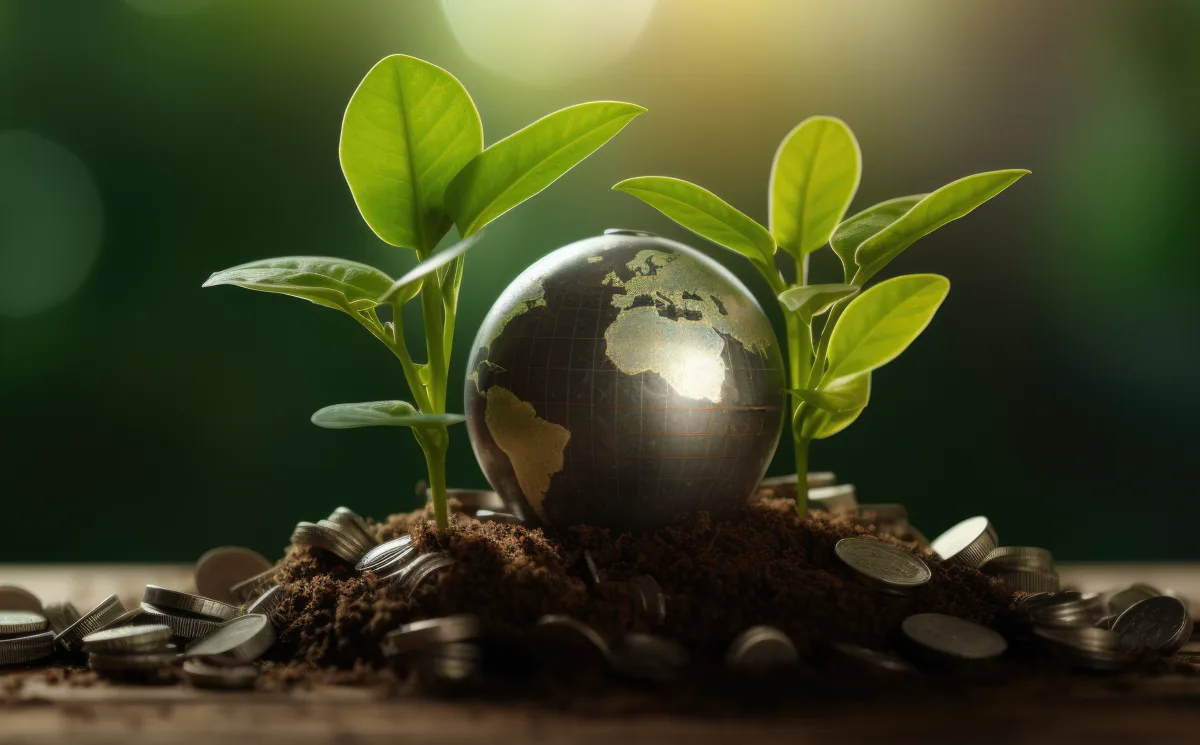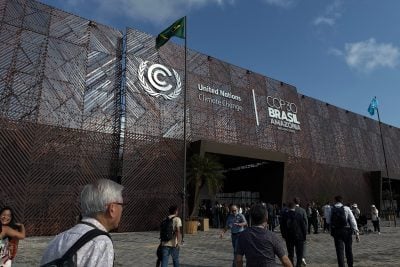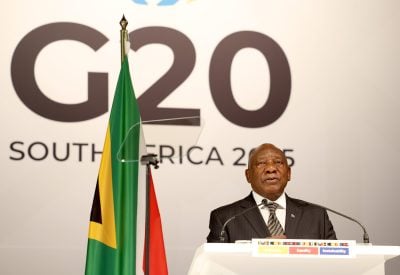Meeting net-zero emission targets requires trillions of dollars in annual investments to build low-carbon and climate-resilient infrastructure. The bond market – given its sheer size of $130 trillion—is one of the few liquid asset classes that allows for sourcing financing of this magnitude. Not surprisingly, green bonds, which ringfence the bond proceeds for environmental sustainability projects, are flourishing. Over $2.5 trillion of green bonds have been issued so far, a sharp increase from under $100bn that had been issued by 2015.
As stellar as this growth has been, emerging market and developing economies (EMDEs) have mostly been left out, even though financing the energy transition poses a much greater challenge for these countries given their limited fiscal space and borrowing abilities. Only about 6% of global green bonds have been issued by EMDEs excluding China and developed Asia, with the issuance in local currencies amounting to only 1%. Even worse, green bond issuances from African nations comprise only about 0.1% of the total.
How can African countries issue green bonds?
To meet climate goals, it’s important to address the problem of low green bond issuance from EMDEs, particularly from Africa. One of the bottlenecks is the local currency risk. International investors are typically reluctant to make investments in emerging economies when they entail exchange rate risk, more specifically, the risk of currency depreciation. Meanwhile, given that revenues are generated in local currencies, emerging economies are reluctant to borrow in dollars or euros and create a mismatch between the currencies of their assets and liabilities. One possibility is to issue in dollars and hedge the exchange rate risk, but hedging can be prohibitively expensive, if at all available as an option.
Nevertheless, for the green bond market to become a viable source of funding for Africa’s climate ambitions, it will be important to attract international investors. If Africa’s green bonds were to become a part of the global bond indexes that are used as benchmarks by international investors, then the demand for these bonds could rise substantially, potentially increasing the premium with which the bonds trade and driving costs lower.
The pool of international funds that could drive the demand is the rapidly growing class of ESG and sustainable funds, many of which target green bonds as parts of indexes they track. Most of these indexes are limited to bonds denominated in dollars or another G10 currency. Many also have rating restrictions as they include bonds only from investment-grade sovereigns or companies.
To address this issue, a recent report published by the Center on Global Energy Policy, Columbia University, suggests a bond structure wherein a third party – an “intermediary” – absorbs the local currency risk of an EMDE green bond, which would allow an international investor to buy the bond as if it’s denominated in dollars. From the vantage point of the EMDE country, it will be a bond denominated in its local currency based on its domestic yield curve. This eliminates the need for either the EMDE issuer or international investors to bear the exchange rate risk, thus potentially opening up a pathway for foreign private capital to flow into green projects in these countries.
While this approach may work for larger emerging economies, the structure needs to be modified for smaller economies in Africa which may face challenges in pooling enough bankable climate mitigation and adaption projects for the green bond used to finance them to reach a benchmark size for indexes—usually $250m to $500m.
One solution could be to issue a regional bond that pools projects across countries. The intermediary would receive the coupon and principal payments on the same dates from green bonds issued by different countries denominated in their respective currencies, with interest rates based on their respective domestic yield curves. The intermediary would convert each of the cashflows to dollars and make a pooled payment covering all coupons and principal payments to the investor. The dollar interest rate on the regional bond that the investor buys should reflect the weighted average credit risk of all the countries that are a part of it.
In theory, countries in a specific region could themselves issue a regional bond, but arriving at such a structure would require standardisation and consensus on the framework and mechanisms, which is likely to be a time-consuming endeavour at the governmental level. Through the regional bond structure discussed here, on the other hand, the intermediary takes care of this issue.
How can the intermediary manage the currency risk?
The regional green bond structure achieves two objectives. First, it allows smaller economies to be able to issue green bonds in benchmark sizes with the support of an intermediary that pools them together with other similar countries. Second, neither the issuing country nor the international investor needs to take the exchange rate risk; the investor is buying a dollar bond and the issuer is selling bonds denominated in its own currency.
The currency risk is instead borne by the intermediary in the structure, which it will need to find ways to mitigate. It is important to note that the intermediary is absorbing only the currency risk; the credit risk – or rather the weighted average credit risk of all the countries that are part of the bond – is still borne by the international investor.
There are three ways in which the intermediary can minimise the exchange rate risk – two of those are attributes of the structure but the third will need to be implemented. First, it generates a carry cushion because of the difference between the local interest rate that it receives from countries that are part of the structure and the dollar interest rate that it pays to investors. The local interest rate typically exceeds the dollar rate for each country because investors require a yield compensation to account for the inflation risk that comes with exposure to domestic bonds.
Second, by pooling countries together in the same structure, it is able to minimise the risk from unexpected macroeconomic and political developments in a single country that can cause a currency to depreciate much more than implied by inflation forecasts. The more the number of countries, the greater the diversification benefit.
Third, the euro can be an effective hedge against the risk of the dollar strengthening. According to the “dollar smile” theory, the US dollar tends to strengthen against other currencies during periods of strong growth as well as during periods of risk aversion, with the currency treated as a safe-haven asset – the two ends of the smile. Conversely, both the euro and EMDE currencies typically depreciate at the two ends of the dollar smile, implying that the euro could serve as an effective hedge against the depreciation of emerging market currencies.
How can the cost of issuance be lowered?
The financial structure described earlier could help address two major hurdles to green bond issuance by smaller African economies: the lack of sufficient bankable projects to issue a benchmark-sized green bond and the local currency risk that some international investors are reluctant to take. However, EMDE countries, especially in Africa, face several additional impediments when issuing green bonds.
Since these are “use of proceeds” bonds, i.e., the funds raised by selling the bonds are earmarked for specific projects, it reduces the flexibility of the government in managing its budget. Moreover, considerable time and effort will be needed to set up a green bond framework that is necessary to assure investors and lower the greenwashing risk. Even once this framework is in place, identifying and tracking the progress on suitable projects is an endeavour. Considering that there are limited ESG mandates domestically, the cost-benefit analysis may not favour issuing green bonds over conventional bonds for these countries.
Providing clear and specific monetary incentives for issuers could change the equation. Philanthropic institutions and other donors could step in to offer these incentives. Their contributions could be directed toward reducing the interest rate – a relatively cheap approach – that these countries pay on the green bond. Lowering the cost may not even require early – or possibly any – cash outlays from donors. This could come in the form of an interest-rate guarantee, akin to the ones used in the Brady Plan debt restructurings of the 1980s and 1990s. A donor could guarantee all (or some of) the dollar-denominated interest payments, which should be reflected in the form of a lower interest rate demanded by investors, thus realising cost savings for the countries that are part of the structure.
If necessary, donors could provide a partial guarantee on the principal of the regional green bond as well, with the portion guaranteed sufficient to bring the credit rating of the bond to the investment grade level. Doing so would lower the cost of issuance further while making it easier for the regional bond to be included in green bond indexes which, in turn, should increase demand from international investors.
Since many of the countries that could potentially benefit from the regional green bond are already facing high indebtedness, it is important to point out that the structure described does not need to add to the debt of the countries that are a part of it. Effectively, in exchange for the savings, the governments would agree to direct part of the budgets toward funding specific green infrastructure projects. Moreover, the governments would be able to pass on some of the savings domestically to companies involved in the projects underlying their respective bond by lending to them at a favourable rate.
Who can play the role of the intermediary?
This brings us to who can play the role of the intermediary in this blended finance structure? For the structure to succeed, the intermediary would need to have a high level of technical expertise and knowledge about the workings of bond and currency markets and be able to engage with and coordinate between different parties, including EMDE governments, index providers, and bond settlement companies such as Euroclear.
Candidates that could likely fill the demanding role of the intermediary are multilateral development banks (MDBs) or development finance institutions (DFIs).
MDBs have been called upon in recent months to change their approach to lending and use their balance sheets more effectively, including at the G20 Summit in India and the Paris Summit in June. Last year, a G20 review of multilateral development banks made recommendations for them to change their risk tolerance and expand the use of financial innovation to increase the impact of their limited capital. These institutions have historically been highly risk-averse – especially when it comes to currency risk as they have conventionally provided financing to EMDEs in foreign currencies – and it remains to be seen if they would be willing to change their approach.
The bond structure could align with such calls for change, including the Bridgetown Initiative suggestion of a $100bn currency risk guarantee fund, managed by an agency under the purview of MDBs, to drive private capital investments to support the energy transition in EMDEs. Besides currency risk guarantees, another possibility is the creation of a green investment bank (GIB), capitalised by MDBs and other international financial institutions, that would act as the intermediary or possibly expand the role of the Currency Exchange Fund (TCX) by adding expertise in bond markets to its currency specialisation.
Reforming the global financial architecture, particularly when it comes to MDBs, is likely to be high on the list of topics that will be discussed at the upcoming COP28. The scale and challenge of sourcing trillions of dollars in clean energy and low-carbon infrastructure investments for EMDEs could require new thinking in financial instrument design and a willingness of international institutions to take on expanded roles. The structure described in this article could be one such step in that direction. With the help of MDBs and philanthropies, it might encourage greater flows of private capital to EMDEs, particularly in Africa, by facilitating the issuance of local currency green bonds at potentially lower costs.
Want to continue reading? Subscribe today.
You've read all your free articles for this month! Subscribe now to enjoy full access to our content.
Digital Monthly
£8.00 / month
Receive full unlimited access to our articles, opinions, podcasts and more.
Digital Yearly
£70.00 / year
Our best value offer - save £26 and gain access to all of our digital content for an entire year!


 Sign in with Google
Sign in with Google 



